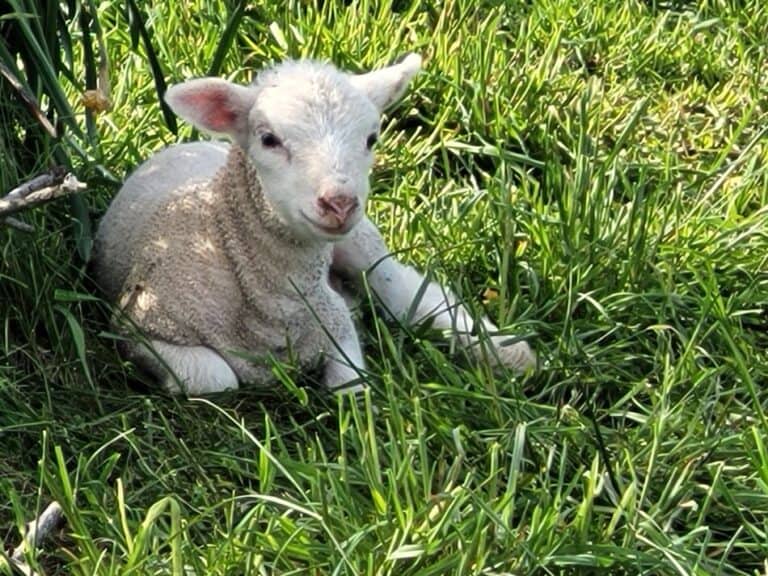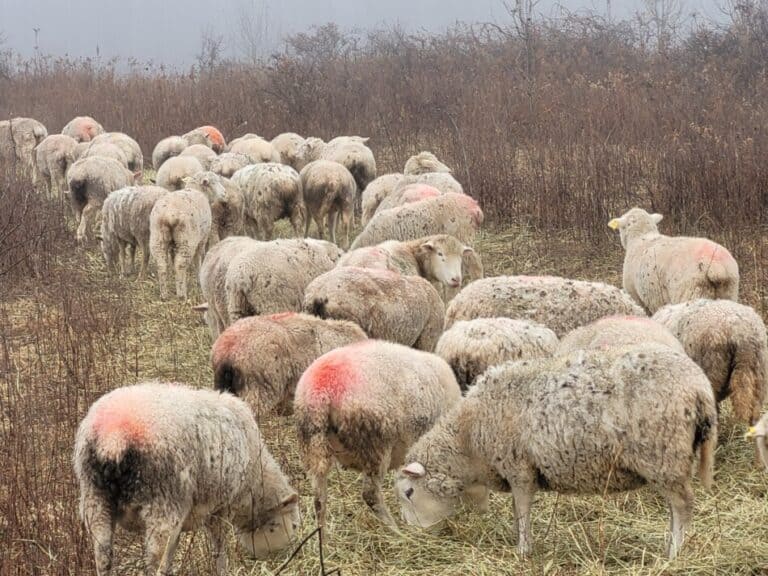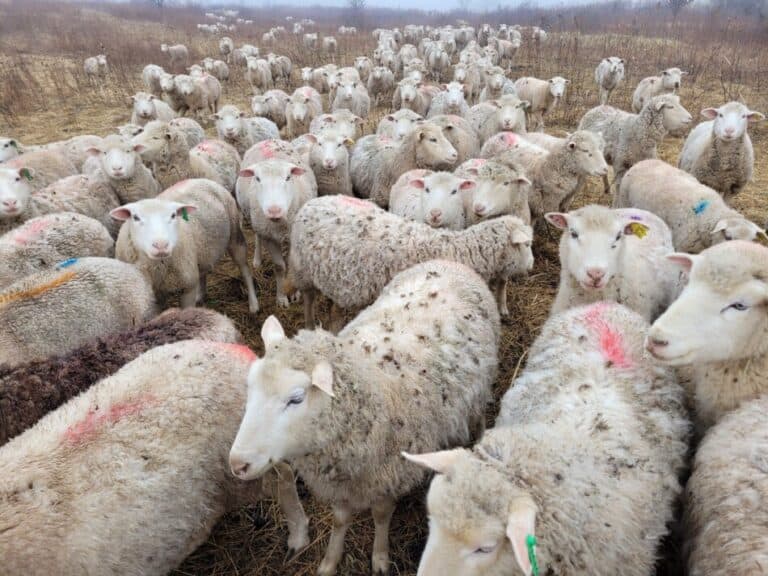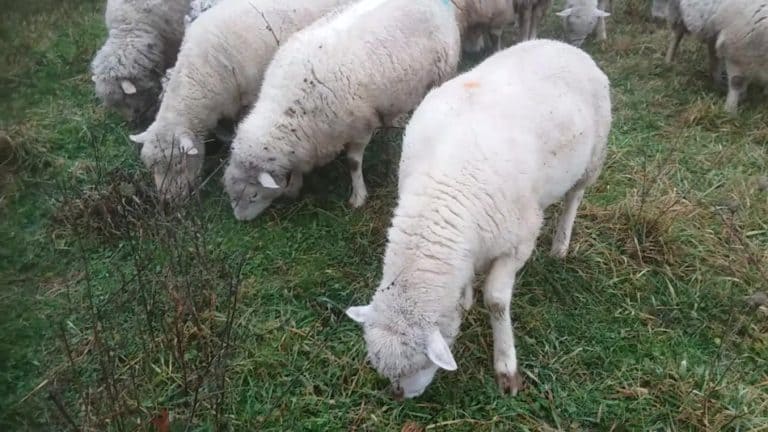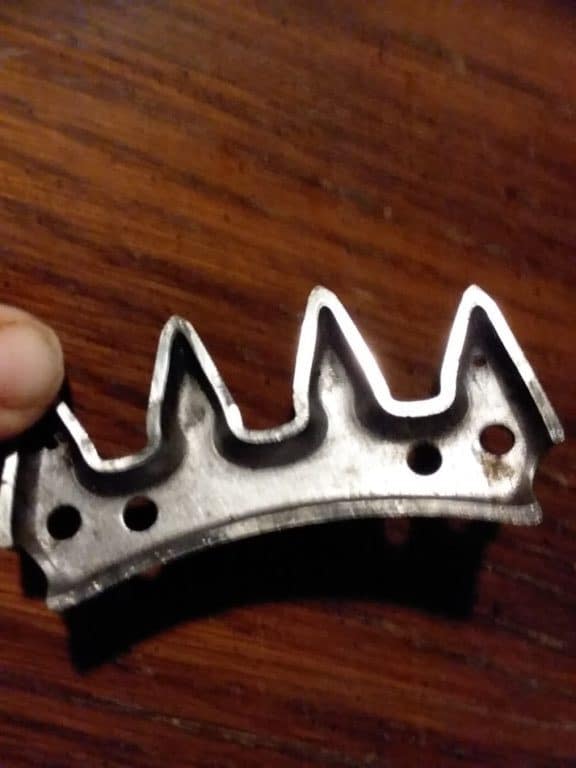Need Your Lambs To Gain More Weight? 3 Things To Check
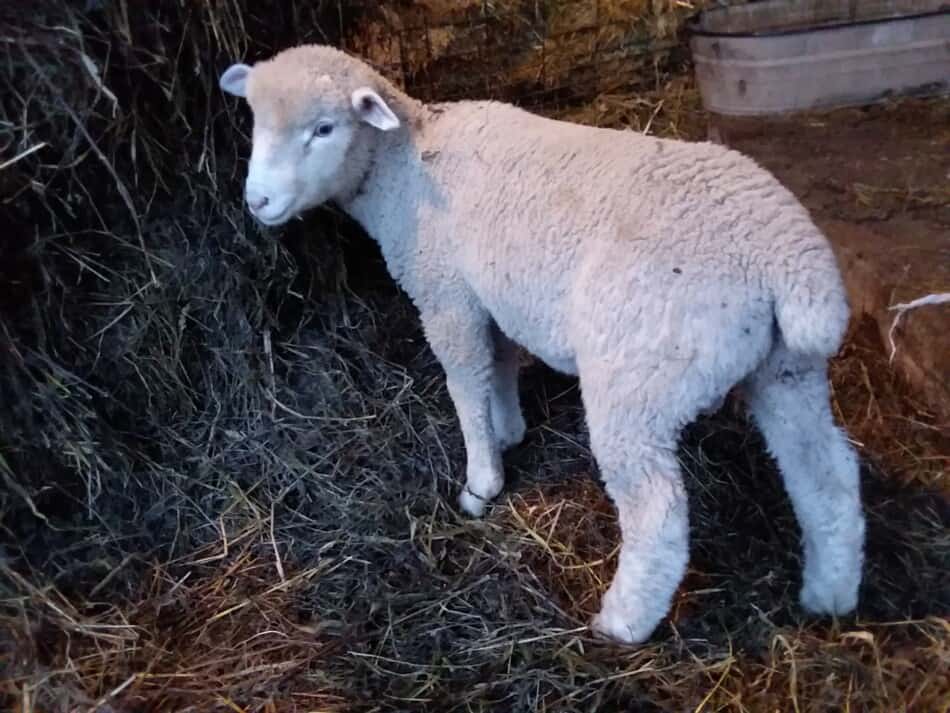
Your lambs should be spunky and growing like weeds! But what if they aren’t growing well?
If your lambs are not putting on weight like they should here are the 3 things you need to check (and possibly change) to get your lambs on track, again!
To get your lambs to gain weight: control parasites and make sure the lambs have a comfortable living environment and plentiful, high quality forages.
Once you notice your lambs are not growing as well as they should be, you need to make some adjustments to their care.
Chances are the problems you are having with your lambs aren’t complicated, but are urgent.
It is important to act quickly to get your lambs back on track.
Here are three easy and straight fat forward things to check to ensure your lambs will be happy and healthy and grow at their best!
Looking for the details of the cost to feed your lambs? Check out my article Cost To Feed Sheep.
First thing: deworm thin lambs!
The first thing you should consider when your lambs are not gaining weight the way you think they should be is parasites.
Growing lambs that have just come off of their mom, this is likely to be the case if you just bought your feeder lambs, seem to have the most problem with “all of a sudden” looking thin.
I attribute it to the separation stress of weaning combined with the lack of milk snacks no longer being available from the ewe.
All of this added to a fast growing lamb seems to make them more vulnerable to parasites.
Ideally, weaning goes smoothly and you will be able to keep your lambs parasite free.
However, if you are noticing that your lambs are not gaining weight like they should, you need to heavily consider that parasites are a likely suspect.
Also, consider that if the lambs are looking thin, the parasites have had the advantage for a while already. If the lamb was tolerating the parasites or resistant to parasites, you wouldn’t have a thin lamb!
Get a sheep approved dewormer and use it!
Sheep 101 has an interesting article on when to deworm sheep and anther on the specifics of sheep parasites on Sheep 201 (a sister site to Sheep 101).
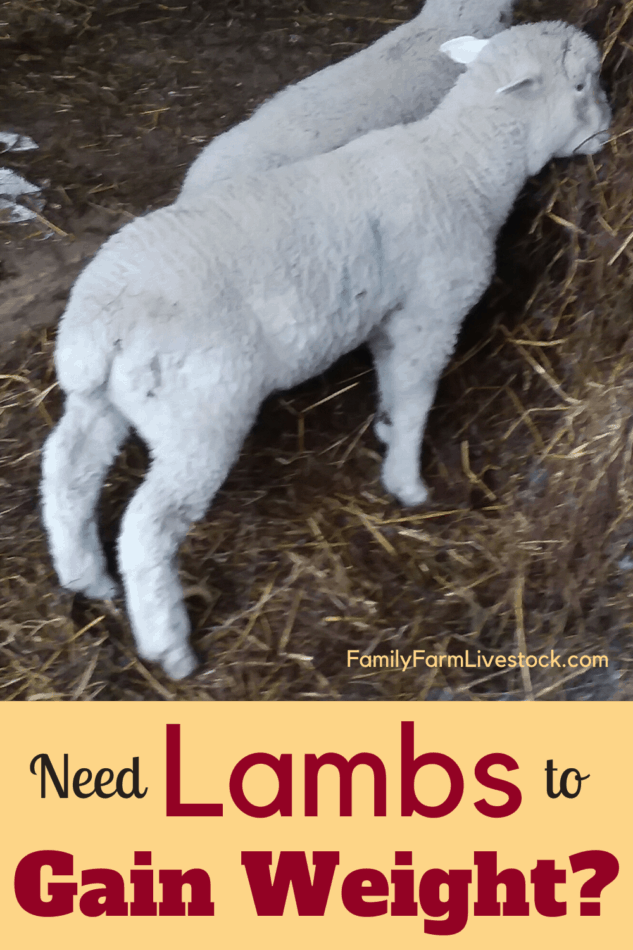
If you don’t want to use conventional dewormers
I understand not wanting to use dewormers on your lambs, I don’t like to either, but we do.
Why? Because I feel it is my job as a responsible lamb raiser to do what is best for the lamb.
If my current ways, (which, for us, are grazing and pasture rotation) are not doing the trick, it’s my job to adjust to something that does work, meaning a dewormer.
Don’t count on the feed type dewormers. This sounds like the easy way to deworm your lamb but it’s not.
These deworming feeds are expensive per lamb and challenging to monitor the dose for each lamb.
There are multiple sheep specific dewormers available to purchase, get one and use it.
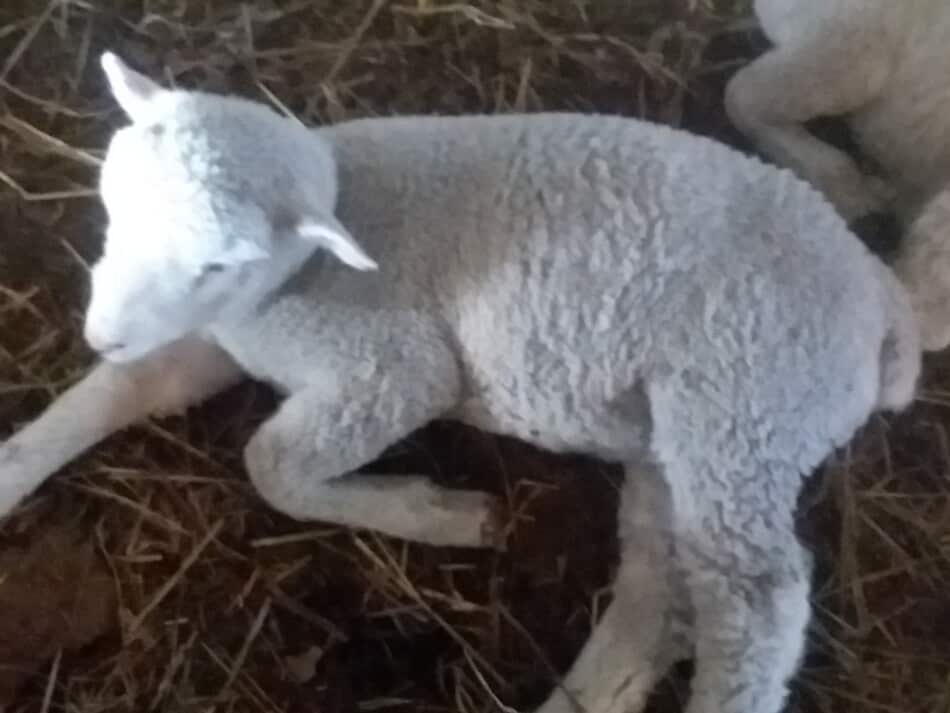
Daily environment for your lambs is easy
Where your lambs live and their daily stress will greatly affect their growth. Here are four aspects of your lambs’ daily lives that need to be considered:
- Comfortable environment
- Low stress environment
- More than one lamb
- Plenty of water
Comfortable area to live
Having a comfortable area to live in is key to all sheep, lambs included. Lambs, as with all animals, will not be at their best in a high stress environment.
Lambs need shelter from inclement weather and wind, including shade. They also need to have a dry spot to bed down for the night.
Low daily stress
Lambs need a low stress, calm environment in which to thrive.
When you are at work, does the neighborhood’s roaming dog come and harass your lambs?
From outside the fence, the dog will scare them and change the amount of time they spend eating and relaxing, both important for growth.
If the dog is actually chasing the lambs, they are being terrorized daily and must be stopped immediately.
Not surprisingly, your lambs will not grow well in this situation. Be aware, the dog in question could be your own!
If you look observe your lambs, especially when they are eating, are the bigger lambs or other stock (other animals you have with the lambs, like cattle or goats) keeping the lamb from eating or drinking?
Think bullying by pasture or pen mates. This one is easy: separate off the lambs into their own pen!
These are just two examples of high stress situations for your lambs. High stress equals poor growth. Happy and calm lambs grow better!
Sheep Creep Feeder shows you how to set up a “lambs only” special feeding area to boost the energy available to your lambs. The pictures are of our set up, with a homemade creep gate.
Lambs need high quality, plentiful forages
Your lambs need a high quality forage, which can be pasture or hay. Fast growth requires high value food sources!
A beautiful stand of grass in your pasture will be great for your lambs, have a salt block out too, of course!
If your pastures are lacking, add some supplemental hay. Lambs, like all ruminants, need the longer fibers of hay or grasses to make their digestive system work optimally.
High Quality Hay gives you actionable steps that we use so you can see for yourself if the hay you are planning to buy is worth your money!
Lambs have plenty of forage? Here’s a test
Here’s an easy test to see if your lambs are getting enough high quality forages: how much time are they spending eating?
A lamb getting plenty of high quality forage will: tank up in a few hours then spend the rest of the day relaxing and chewing their cud.
As long as the weather is cool, they will include some running around time, as well.
A lamb that is not getting enough forage: will spend all day going back over the pasture multiple times to try to get enough to eat and will not spend much time laying down and working her cud. This is a problem.
Lambs that are short on forages will have to spend all of their day on intake and have not enough time for processing that intake. Only to have to start over again the next day. This is a losing battle for a growing lamb.
Make sure your lambs have plenty of forages available or add hay to their diet.
Choosing to supplement your lambs with concentrates
Sometimes we do end up supplementing out lambs with a concentrate, usually corn. Ideally, we don’t! We prefer lambs to have pasture.
However, until we can get access to more pasture, supplementing their growth is our best (so far) practical solution.
We could buy hay, of course, however, when we run the numbers supplementing with the corn is significantly less expensive than sourcing and purchasing the needed hay.
Hopefully, this will change or the lamb price will make feeding forage only economical. Until then, this is the best solution we have come up with.
If you choose to feed some sort of supplemental concentrates, bagged feed, be sure it is lamb specific.
Mixed livestock feed or feeds formulated for other stock are not lamb appropriate. Your lambs will eat it, but they will not perform well on it.
Lambs are gluttons on feed, be careful!
Lambs are gluttons and will pig out on concentrates then have digestive problems or even kill themselves, seriously.
If you choose to use concentrates, be sure to introduce it slowly and keep plenty of hay available.
To be clear, your lambs are ruminants and like all ruminants they do not need concentrates, grain or pellets, to grow.
You can choose to supplement their ration with some concentrates, but you don’t need to if you have the appropriate forages available for your lambs.
Time needed to fatten lambs
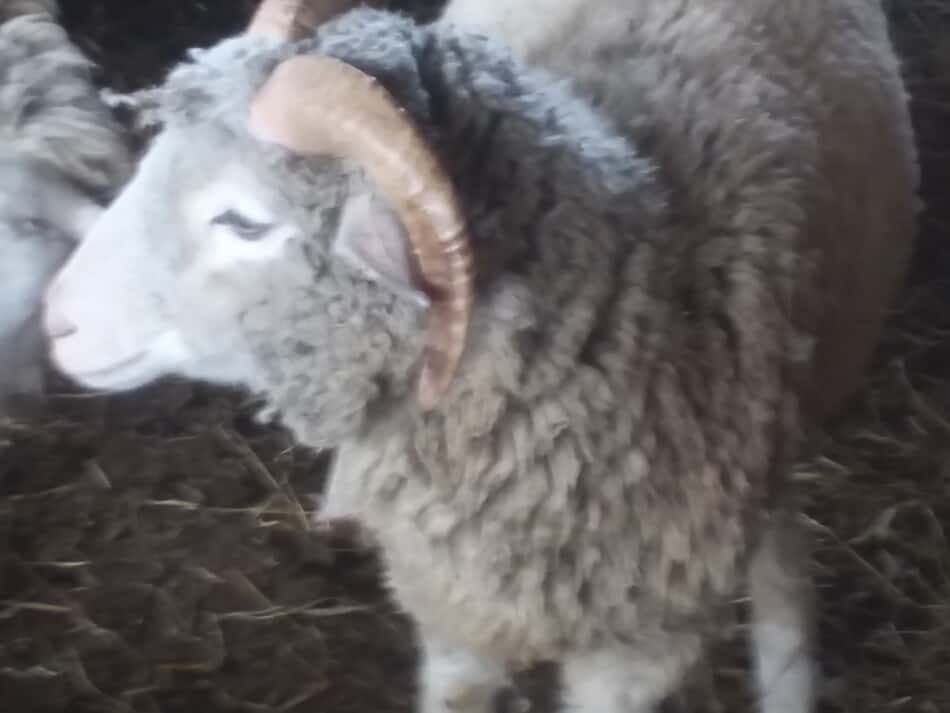
This is the section where we do a bit of math, no worries, it’s easy.
The time to fatten or finish your lambs depends upon two numbers and one condition: start weight, ending weight and the condition is that you keep them growing the whole time.
The foundations of optimal daily gains are plenty of forage and healthy (low parasite load) lambs.
With out these two, you won’t get the growth you need to fatten your lambs on schedule. Click here to see the chart that I used for these daily gain estimates.
On to the math:
You purchase a few (you need more than one!) 45 pound feeder lambs from the neighbor.
These will be weaned lambs, ready to grow on your forages. (Lambs from a larger breed of sheep may be more in the 60 pounds or so range, these will be great, as well. We’ll stick with 45 for this example.)
Let’s say you want to finish your lambs at 90 pounds.
That means you need to put another 45 pounds of weight on the lamb until it is ready for processing.
Most well fed lambs will be gaining .5 pounds per day. At .5 pounds of gain per day you’ll need to raise those lambs for 90 days to get them up to the 90 day finishing weight.
The lambs in this example will be finished in 90 days, if all goes well. If you have parasite problems or poor quality forages, it will take longer.
Note: the starting and finishing weights of the feeder lambs will vary with breed.
A larger breed of sheep like a Suffolk will have a feeder lamb closer to 60 pounds and you’d want to finish those lambs in more of the 110-120 pound range.
A more compact bodied sheep, like a Cheviot, would start around 40 pounds and be beautifully finished at 80 pounds.
Ask the breeder about the ideal finishing weight for the lambs, when you buy them.
She will know what finishing weights are appropriate for the genetics of her flock and give you a good idea of what finished weight range you should be aiming to hit.
